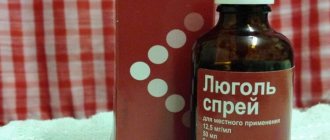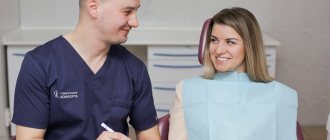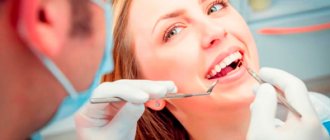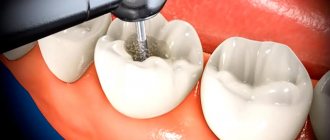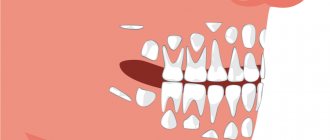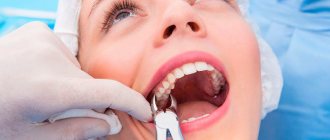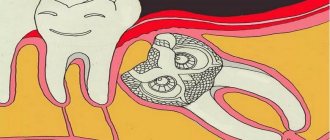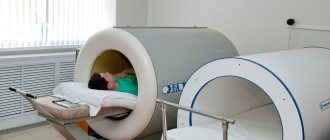Home — For the public
- Map of medical organizations
- Vaccination
- Clinical examination
- Fluorography
- Addresses and opening hours of clinics
- Emergency rooms
- Oncology
- Where to take an HIV test
- Healthy child's office
- Services
- Prevention of CVD
- Disease Prevention
- World Patient Safety Day
- Newspaper "Medical News"
- specialist
- School of Health
— Disease prevention
- HIV infection
- All about vaccination
- All about proper nutrition
- Hepatitis
- Flu
- Dementia
- Schoolchildren's health
- STD
- Tick-borne encephalitis
- Whooping cough
- Measles
- Legionellosis
- Meningococcal infection
- Oncology
- Acute intestinal infection
- Pediculosis
- First aid
- Pneumococcal infection
- Pneumonia
- Prevention of rabies
- Dependency Prevention
- Rotavirus infection
- Diabetes
- Cardiovascular diseases
- Injuries
- Tuberculosis
- Tularemia
- Physical activity
- Obstructive pulmonary disease
- Exotic infections
- Ecology
- Why is swimming in ponds dangerous?
— All about proper nutrition — How many times a day should you eat
All nutrition recommendations are individual and depend on your goals.
Proper eating behavior involves not only controlling how much and what kind of food ends up on the plate. It also includes an understanding of what hours a person should and can afford a snack, how many times a day he should eat, and how to deal with hunger.
Proper nutrition VS diet
Rational nutrition is often contrasted with diet. This is due to the fact that the passion for any restrictive diet is associated with the desire to get the body into better shape by giving up a number of foods and streamlining the regime.
What is the fundamental difference between them?
The stable phrase “go on a diet” stipulates that after achieving results it will be possible to “get off” and return to normal eating behavior. As a result, the person:
- perceives dietary restrictions as temporary;
- does not think that the diet can be harmful;
- agrees more easily to exotic options;
- experiences stress and chooses reward options for patience.
Unlike dieting, nutrition (or nutrition) is a long-term project. It involves a complete change in habits and diet composition and really only works when it becomes part of a new lifestyle. The regime for losing weight on PP and maintaining optimal weight differ only in that when losing weight, the daily need for proteins, fats and carbohydrates changes.
Nutritionists advise recalculating and adapting your diet after losing every 5 kilograms of weight. This is the main feature of proper nutrition: if a person feels good and observes positive external changes in the diet, he can remain on such a menu as long as he likes. This eliminates the need to constantly look for new “working” diets and try strange food combinations to lose weight.
Following a regimen to maintain weight under PN conditions should become the same habit as monitoring your appearance and health.
Advantages of photopolymer material
This differs from other types of composite materials:
- The ability to control the hardening process. The doctor fills the tooth without haste, applying layers of material as carefully as possible. The composition is plastic, hardens only when exposed to an ultraviolet lamp.
- Safety for the patient's health. Photopolymer material is characterized by low toxicity, so it is used even in pediatric dentistry.
- The ability to create a filling of the desired shade. She won't stand out.
- Durability. It is due to good adhesion to hard tissues. Typically, the service life of a photopolymer filling is at least 5 years. With careful handling and high-quality teeth cleaning, its service life increases.
- Ease of finishing. The composite can be polished well, so the filling does not create discomfort - it will not scratch the mucous membrane of the tongue and cheeks.
An experienced dentist can easily give the crown the desired shape, so the filled tooth looks natural.
Calorie content and daily routine
Sufficient calorie intake and frequency of meals protect against hunger. Infrequent nutrition leads to the fact that a person cannot wait for lunch or dinner and either overeats or begins to snack on foods that are not the most beneficial for health and figure.
So, how to plan the daily calorie intake and dietary supplements, the correct diet and drinking regimen - simple advice from a nutritionist:
- It is necessary to calculate the daily calorie intake. It depends on the gender, age, body weight and activity of the person. To do this, use mobile applications or online calculators; A more accurate result can be obtained by contacting a specialist.
- When calculating the BJU ratio, you should “start” from the fact that a person should eat 1 g of protein per 1 kg of body weight. This amount of the nutrient must remain virtually unchanged - the body suffers from both a deficiency and an excess of proteins. In general, the proportion of BZHU should be close to the classic one: 1: 1: 4; in case of “too much”, the caloric content is reduced due to fats and carbohydrates.
- A person should drink at least 35 ml/kg of clean water per day. So a girl weighing 62 kg will need 2170 ml of water. In order not to experience stomach fullness and discomfort, it is enough to divide it into 10-11 doses. The first glass is within half an hour after waking up, before breakfast.
- Breakfast is a must for a healthy diet. Skipping or postponing this meal slows down fat burning, forcing the body to urgently synthesize glucose and release lipids into the blood. Breakfast composition: proteins and carbohydrates. It must be eaten within an hour of waking up.
- During the day, it is recommended to eat up to 5-6 times: three main meals and 2-3 snacks. This frequency of meals helps to avoid overeating, not feel hungry and not be distracted by food during the working day.
- Serving size is about 200 g. This is the optimal amount at which a person will be full until the next meal, but will not feel heavy and regret having overeaten. To estimate the size, use the method of comparing a portion with a palm, a fist, or a handful.
Meal times are calculated individually, depending on the time of waking up and going to bed. Here is a standard proper nutrition schedule for those who get up after 6 a.m. and work 1 shift:
- breakfast – 7:00;
- 1 snack – 10:00;
- lunch - until 14:00;
- afternoon tea – until 16:00;
- dinner – until 18:00;
- evening snack - 2 hours before bedtime.
Proper nutrition requires certain food restrictions. To avoid stress and the subsequent desire to “reward” yourself, you should allow your favorite dishes on the menu, taking into account their composition and calorie content. Their energy value should not exceed 10%-20% of the daily diet.
When can a light seal be placed?
The photopolymer composition is considered universal, therefore it is widely used in dentistry. There are a large number of pathologies for which the dentist prefers this composite, including:
- caries;
- erosion and necrosis of enamel;
- fluorosis;
- wedge-shaped defect;
- pulpitis and periodontitis (light filling is placed at the final stage of disease treatment);
- dental injuries and chipped enamel;
- pathological abrasion of units (a photopolymer filling is installed for temporary restoration of the tubercles).
In addition, the dentist uses this filling material to give the stump the required size and shape before prosthetics with fixed dentures. Thanks to a wide palette of shades and good strength after hardening, the photopolymer composition is suitable for any units in the series; it is also chosen for aesthetic restoration.
Snacks and main meals
The similarity between PN and a dietary diet lies in the frequent and fractional consumption of food. This reduces the load on the gastrointestinal tract, liver, and pancreas, and the person constantly receives the required amount of nutrients. During the day, the intervals between meals should be 2.5-3 hours. The percentage of energy in the diet during each meal is also important. Nutritionists recommend allocating up to 5% of your daily calorie intake for each snack. For example, with an estimated value of 1800 kcal/day, 1 snack will be 90 kcal. It could be:
- 2 loaves of bread and 50 g of low-fat cottage cheese;
- a piece of chocolate;
- 1 loaf of bread and a glass of kefir;
- 2 apples.
Larger snacks are irrational, since their main task is to protect against hunger between main meals. “Abuse” of snacks and the insistent recommendation to eat more often in order to “accelerate metabolism” is nothing more than one of the dietary myths. It was born from statistical research as a hypothesis that frequent meals are the key to slimness.
Back in 1997, French nutritionists conducted a clinical study and proved that such a regimen, unlike assessing calories received and expended, does not lead to slimness. But does this mean that you should completely give up snacking? No, extra meals help avoid breakdowns and maintain performance throughout the day.
The optimal distribution of calorie content for main meals is as follows: 25% for breakfast and dinner, 35% for lunch.
What is a light seal?
The photopolymer composite material that the dentist uses consists of a mixture of resins, silanes and filler.
It hardens when exposed to ultraviolet radiation, so when filling a tooth, the doctor uses a special lamp that creates waves with a length of 450 Nm in the blue spectrum. For a high-quality result, he applies the composite material layer by layer, exposing each layer to light. At this stage, primary polymerization occurs. Then, within 24 hours, the chemical bonds stabilize and the filling finally hardens. In this regard, the doctor gives certain recommendations, compliance with which guarantees the durability of the material - the filling lasts 5 years or more.
Food at work - and let the whole world wait
The transition to a balanced diet is associated with a constant assessment of the composition of products. At first, diet planning is accompanied by calculations of calorie content and dietary fat. This requires abandoning ready-made multi-component dishes and preparing meals yourself.
Traditionally, eating together is used as a way of communication. People who are switching to a healthy diet may worry about how they will look compared to their colleagues. However, fears about the appropriateness of buckwheat or apple during a general tea party often do not reflect reality. Yes, the most common snacks in the workplace are still sweets and fast food, but the growing popularity of healthy eating will make it possible to interest colleagues in new recipes.
When telling how to eat properly at work, nutritionists advise taking prepared foods with you. With a standard schedule, you will need to stock up on 3 servings of food: 1 lunch and 2 snacks. The composition of the basic techniques does not raise questions: soup, meat or fish with side dishes, salads. But among standard snacks, apples appear more often, which are not allowed for everyone: they increase gastric secretion and stimulate appetite.
In weight loss and weight maintenance mode, the following food options are allowed:
- sandwiches made from bread and low-fat cheese;
- bread with fish and herbs;
- homemade marshmallow without sugar;
- fruits: oranges, bananas, pears;
- sliced vegetables with 5% homemade cheese;
- eggs with herbs, vegetables;
- natural kefir or yogurt;
- dried fruits, nuts.
How is the filling installed?
First, the doctor prepares the tooth for restoration - removes pathological tissue and forms a cavity, removing softened dentin and enamel. This ensures the durability of the filling. If the tooth is severely damaged, the dentist removes the nerve, installs a pin, and only then proceeds to filling the canals and forming a crown.
Before starting work with photopolymer material, he etches the cavity with acid to clean the walls of sawdust and other foreign particles formed during drilling of the affected tissue. This manipulation helps to open the dentinal tubules, which improve the fixation of the filling.
After this, the doctor applies an adhesive material, which acts as a connecting link between the tooth and the photopolymer composition. After illuminating it, the doctor applies the filling material in small portions in layers, carefully pressing it to the bottom and walls of the cavity. Each layer is exposed to ultraviolet light. When the dentist completes the modeling, he grinds and polishes the surface of the filling.
Is it possible to eat before bed
Late meals actually worsen the quality of sleep: it becomes more restless. The idea of going to bed with a half-empty stomach is often explained as follows: in 1 hour of sleep, the body spends an average of about 50 kcal. Taking a break from food for 10 hours will allow you to “burn” 550 kcal. If a person eats at night, his body will be busy processing food rather than burning fat.
However, the suggestion “not to eat after 6” has no scientific basis. The myth that every crumb of bread that gets into your mouth in the evening is inevitably deposited on the sides was debunked by Israeli scientists from the Institute of Nutrition. They proved that eating carbohydrates at night does not increase the risk of weight gain.
Answering the question of how many hours before bedtime you can eat, nutritionists say that the total daily calorie intake and energy expenditure play an important role. If a person consumes the required amount of nutrients or is in a slight deficit (up to 20% of calories), he does not gain weight, but maintains or loses weight. The time of dinner in this case does not play a special role, however, the best hours for the main meal are from 17:30 to 18:30, and for a snack at night - 2 hours before bedtime.
Evening fasting with refusal of any food after five or six o'clock in the evening provokes a breakdown with uncontrolled emptying of the refrigerator. Some restriction recommended in a healthy diet really helps people losing weight to control their eating behavior and not go beyond calorie limits.
Proper nutrition is based on taking into account the needs of the body. It develops new healthy habits, reduces the likelihood of relapse and restores health. Self-cooking helps you fully control the composition of dishes, organize meals and snacks at home and at work.
